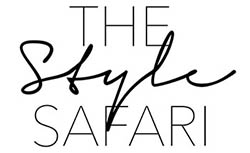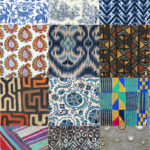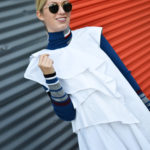Let me tell you a story.
The other day I was at a new Nordstrom Rack in the town I grew up in, when my hand stumbled across this sweater. It was stuffed in one of those round racks that are merchandised by the size, with no two like items. It was cream colored and thick and immediately my hands recognized the feel and weave of the yarn. I worked on this sweater. I helped to develop it, price it, decide how many to manufacture, and describe what made it special to the sales associates who would end up selling it.
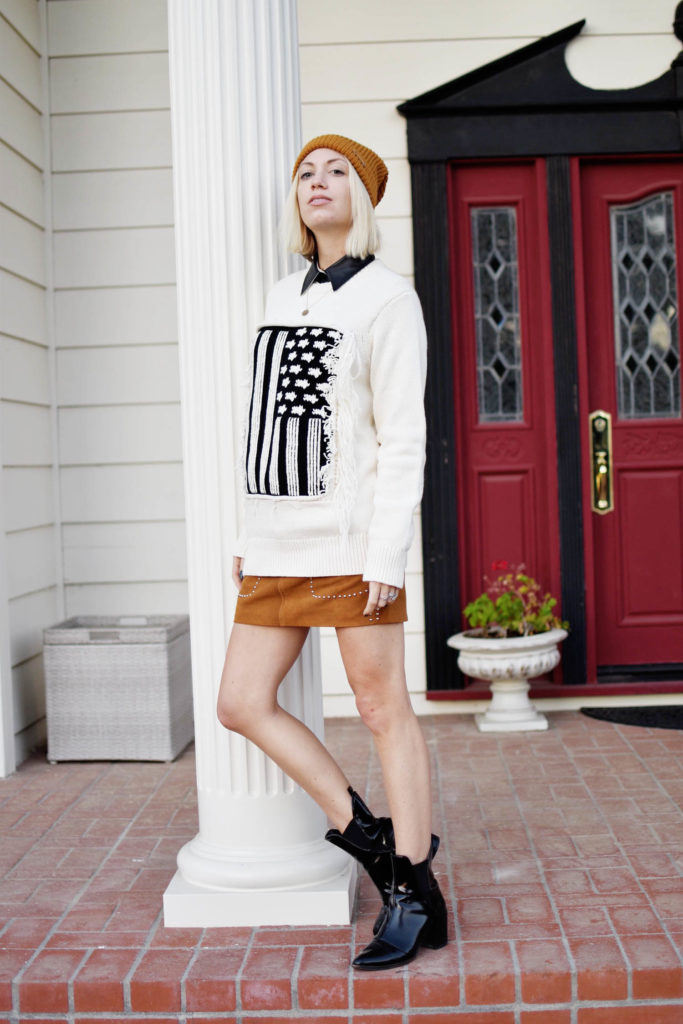
Two years after this flag sweater was sold in full price Coach stores for $695, I scooped it up at a Nordstrom Rack for $145. Not necessarily ‘cheap’ to most Nordstrom Rack customers, but for me, priceless. Trust me, it’s not about the price. I could have had it at a major discount when I was working for the company. No… it’s more about the nostalgia and physical evidence of working so hard on something and having it come to fruition. And then… years later, be reminded of that work.
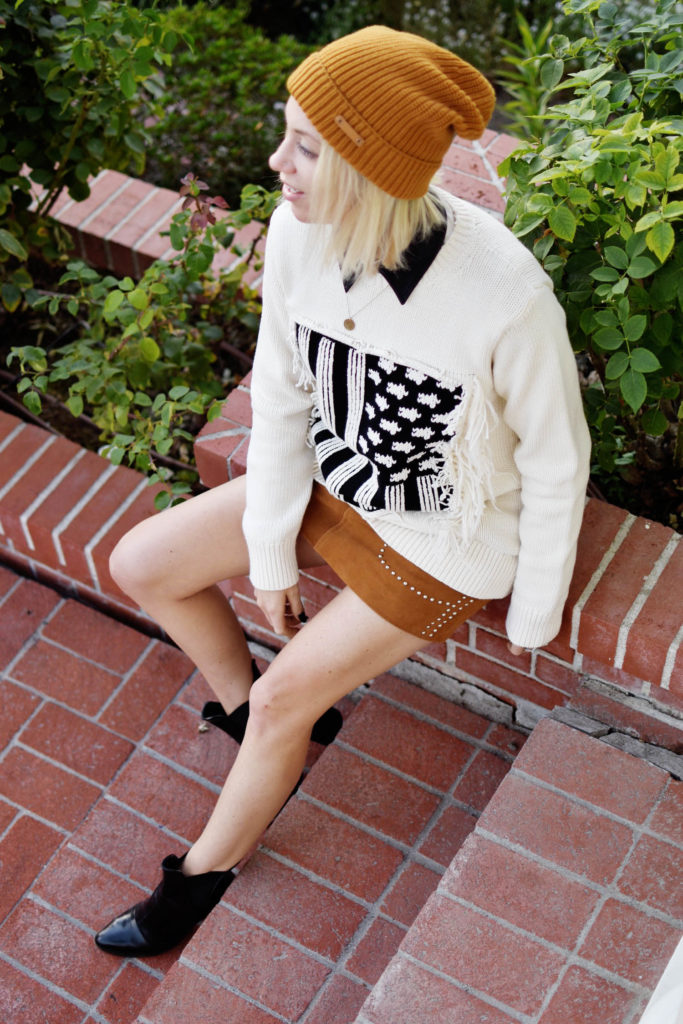
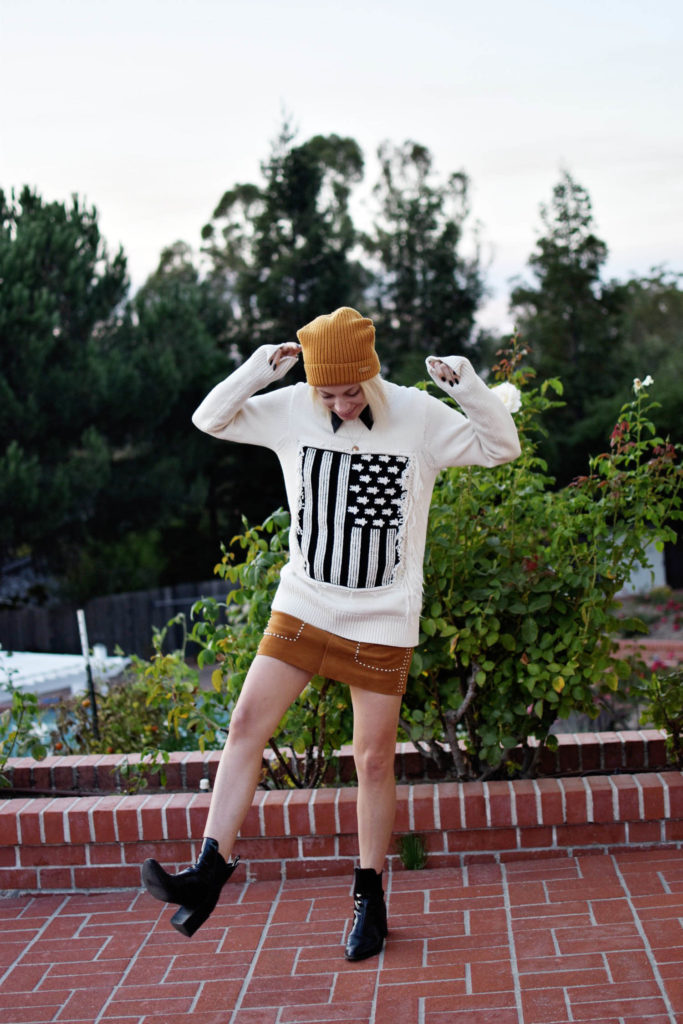
I remember when I traveled domestically to stores to talk about the first Coach 1941 line. We had an intarsia sweater, seen on me here, that was modeled after the sweater the little boy wears in The Shining. I mentioned that it was an intarsia, and hands went up throughout the room to ask what that meant.
Intarsia is a method of knitting in which different color sections are made with separate yarn, and tied off before the next yarn color is knitted. This is a very complicated process, but reduces bulk compared to other, more mass produced methods. How can you tell if your sweater is an intarsia? Well, flip it inside out! Other than the knots, the design should be almost the exact same on the inside.
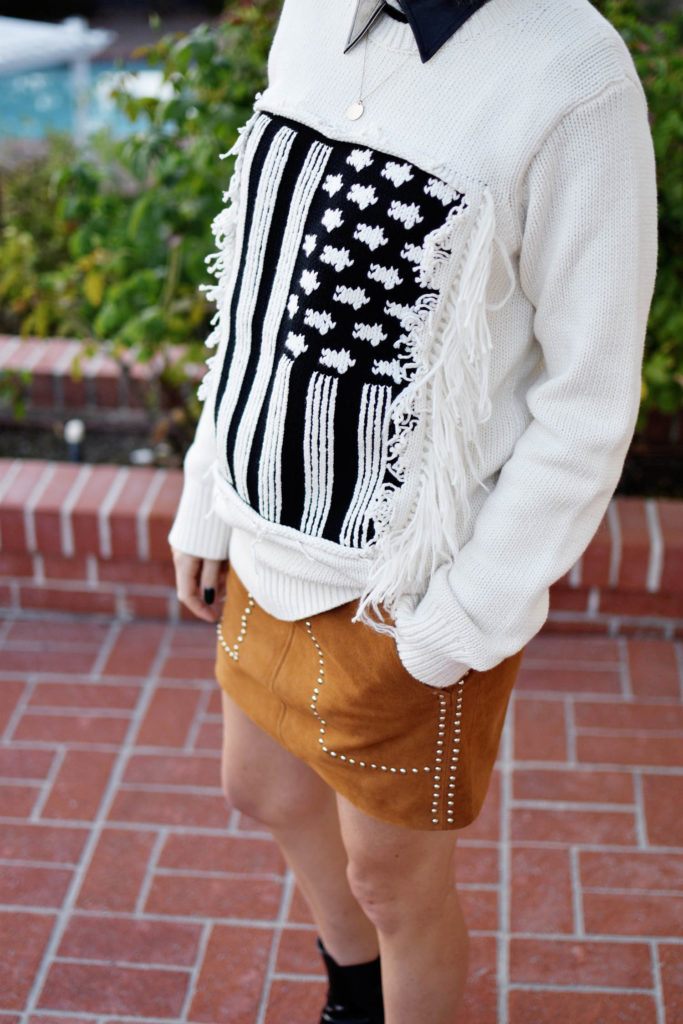
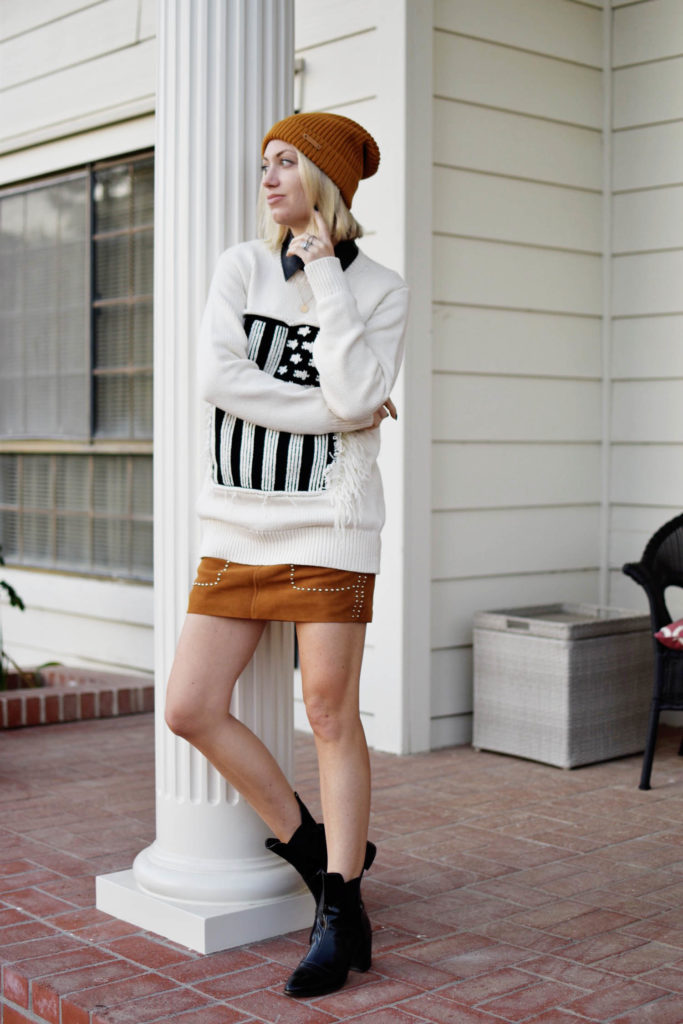
At Coach, this idea of running an iconic intarsia sweater in each of our collections with a motif or symbol, was a pillar of the 1941 brand. The last collection I worked on we introduced Rexy, the T-Rex intarsia, and he’s so popular that new color iterations of him are still being sold in stores. The turned-up flag was our third season, and although it isn’t the most technically complicated, the appliqué and fringe process add a unique textural detail to the sweater.
Anyway, when I saw this sweater at the Rack I knew I had to have it… and share it with you all. Hopefully you guys enjoyed this little learning lesson about Intarsia sweaters, and remember to look twice this fall when you are shopping for sweaters to spot an Intarsia!
Shop some of my favorite intarsia sweaters below!
